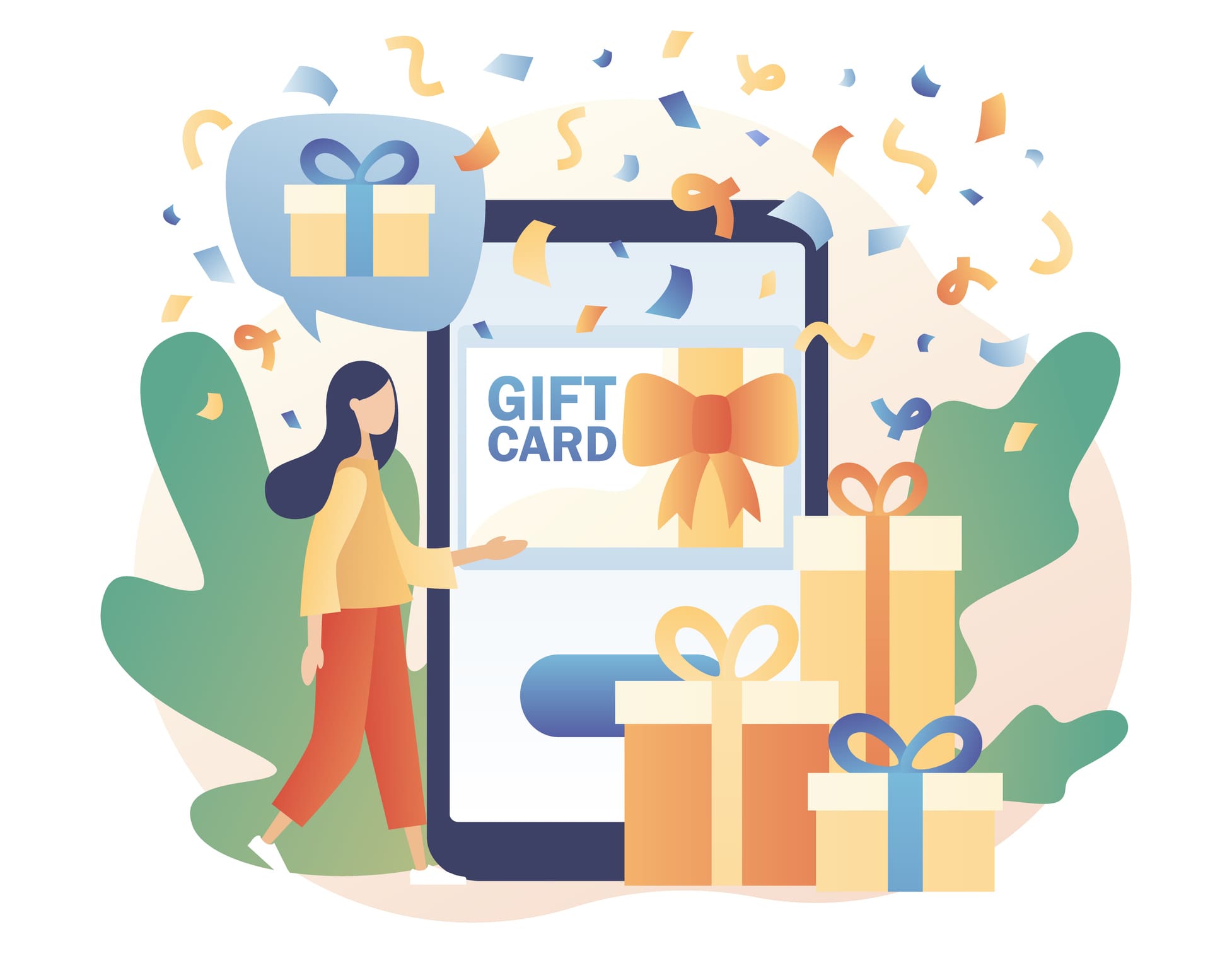You’ve got the picture-perfect wellness program, with all the right documents and resources in the right places. You’re ready to watch engagement soar, health outcomes improve, and work friendships blossom—but participants are still finding gaps in care.
Sometimes, managing a wellness program feels like cleaning out a junk drawer. At one point, everything in it served a purpose, but now the thought of using or even cleaning it all seems exhausting.
When it comes to your organization’s program, all you need is a small collection of the right tools and point solutions to help you reach your goals (and sift through the dead weight).
The Hidden Price Tag of Your Wellness Program
While adding more features to a wellness program seems like the right course of action, it doesn’t always lead to a happy ending.
PMC reports that across industries, half of all organizations juggle between four and nine different point solutions, with some managing as much as 12 at a time. And with four in 10 Americans currently struggling to manage multiple chronic conditions, the real challenge isn't just designing the right benefits package—it's making sure all integrated platforms work together without creating digital chaos and making more work for admins.
When digital solutions in your wellness program don't talk to each other, your carefully crafted wellness program starts to feel more like a maze than a path to better health. Let's take a look at eight game-changing solutions that can transform your wellness program from an administrative headache into a streamlined powerhouse.
1. Biometric Health Screenings: The Budget Booster
The journey to better health and wellbeing isn’t a straight road—and when life gets bumpy, it helps to have roadside assistance to get you back on track.
Biometric health screenings serve as a compass for tracking health changes that might otherwise go unnoticed. By measuring everything from blood pressure to cholesterol, these screenings can catch silent threats before they become big problems, helping to reduce costs associated with chronic conditions.
What’s more, opting for a screening partner that can seamlessly integrate with your tech stack makes all the difference. For example, if you spot a trend in blood pressure numbers, you can spotlight heart health activities from your challenge library—all from the same platform.
With on-site biometric health screenings costing 2.1 to 3.2 times less than primary care visits, these solutions are critical for at-risk participants who can’t fit in an office visit. And by accessing secure, automated, and accurate services in-platform, admins can act on real-time health insights rather than toggling between multiple tools at once.
2. Data Analytics and Reporting: The Business Case Architect
A majority of wellness programs don't lose steam because they're ineffective. They fizzle out because admins lack the evidence-backed tools to prove their value.
Without systematic tracking of employee health and wellbeing, it’s easy for organizations to stumble in the dark, throwing wellness initiatives at the wall and hoping they stick. Modern data analytics reporting tools turn this challenge into an opportunity, providing concrete proof of program impact.
These health analytics platforms offer deep analytic insights, allow data-informed decision-making, and provide curated action steps and strategic direction to maximize return on benefit investments. And the results speak volumes—organizations incorporating data analytics in their wellness programs see healthcare costs decrease by nearly 50%, with cascading profits soaring 126% higher than competitors.
The best part? Modern data intelligence platforms let you slice, dice, customize, and export health data any way stakeholders want it, giving admins the business cases they need to take programming and engagement to the next level.
3. Healthcare Advocacy: The Guiding Lighthouse
Navigating the complex Rolodex of our healthcare system can feel like traversing a maze—every turn leads to another specialist, treatment plan, or insurance form. It’s no wonder 40% of Americans skipped or postponed routine healthcare visits last year, and as a result, 60% saw their health decline.
Sometimes, you need a little extra guidance to help participants understand what lies ahead. Partnering with a comprehensive healthcare navigation solution not only gives your workforce that guidance—it provides personalized support through dedicated care teams.
These healthcare advocates help participants get to the bottom of their benefits, find quality providers, manage chronic conditions, and make informed healthcare decisions. Combining human expertise with intelligent technology, these solutions make healthcare less intimidating, improving access to appropriate care and maximizing benefits usage.
4. Health Coaching: The Personal Behavior Changer
The world of wellness programming can seem like an endless cycle of spreadsheets, bar graphs, and clinical data. Adding a flair of health coaching gives life to health priorities that could easily fall to the wayside, elevating wellness from a requirement to a hobby.
Even the best medical advice falls flat without the right support system. Health coaching can serve as your program's behavior change catalyst, transforming participants’ good intentions into lasting habits.
But more importantly, health coaches hold the key to sustaining program engagement past the first year. Not only does coaching give participants a 24/7 virtual glimpse into their comprehensive health progress—it also acts as a human touchpoint to round out the overall behavior change process.
One-on-one engagement with board-certified health coaches provides a range of personalized support for all types of members, improving everything from tobacco cessation and heart health to stress management and nutrition. Unlike traditional medical professionals who focus purely on clinical guidance, coaches work alongside participants as partners, creating accountability that actually sticks.
5. Digital Mental Health Solutions: The Non-Negotiable
With 76% of U.S. workers battling at least one mental health condition, support for mental and emotional wellbeing has evolved from a nice perk to a table-stakes requirement.
But it’s not enough to pick a few well-reviewed services and hope they resonate. As mental health ebbs and flows, it’s imperative to couple point solutions with immediate access to licensed counselors so mental and emotional health concerns are addressed as soon as they arise.
Integrating a CBT-focused mental health solution that supports therapeutic interventions with evidence-based content, practical resources, and daily inspiration is proven to foster meaningful and lasting behavior change. What’s more, adding text-based elements like self-directed dialogue, voice notes, resource links, and video lessons makes mental healthcare familiar and personal while reducing stigma.
Translation—with the right tools under your belt, your program can become the mental health beacon your participants need in moments of crises, helping to mitigate challenges before they take root.
6. Fitness Classes and Resources: The EEO Engagement Accelerator
In our hybrid work landscape, it’s not enough to provide gym stipends or the occasional workout class anymore.
To make fitness truly engaging, organizations need a solution that can be accessed any time of day, on several devices, and with the option of co-viewing with others.
On-demand, virtual wellness classes and programs offer a wide range of top-quality resources tailored to participants’ specific needs, lifestyles, and schedules. Making fitness as personalized and trackable as possible is the quickest path to maximum results, and adding group configurations along the way can skyrocket engagement.
But the value of virtual fitness doesn’t end with building muscle, losing weight, and improving heart quality. Most importantly, these classes give equal fitness opportunities to participants of all ages, abilities, and backgrounds, serving as an excellent supplement to DEI initiatives.
7. Rewards and Incentives: The Wellness Sweetener
"When people are financially invested, they want a return. When people are emotionally invested, they want to contribute." — Simon Sinek, Author and Motivational Speaker
A wellness program without incentives is like a birthday party without cake—technically complete, but missing that special something that makes everyone want to join.
And, while material rewards provide a small portion of motivation needed to engage, they serve a much larger purpose. A customizable rewards and incentives marketplace serves as a monetary front-door to the possibilities of healthy lifestyle change, adding a cherry on top of the wellness cake.
High-frequency recognition, best-in-class rewards, and employee feedback are proven to enhance higher adoption and impact of wellness programs. And, when participants can choose which rewards and incentives are meaningful to them, they’re more likely to log in daily, explore platform features, engage consistently, and spread the word.
8. Bereavement Solutions: The Emotional Supplement
Support for grief and loss is quickly becoming a huge draw for workforces, especially as more individuals are caring for aging loved ones. With 80% of bereaved individuals spending over an hour every workday dealing with grief and estate duties, simply offering leave isn’t enough.
Bereavement solutions help individuals deal with the many administrative, emotional, legal, and financial challenges they face after a loved one passes away—information that is often hard to come by, difficult to understand, and unsympathetic to heavy life events. And, if you already have an integrated mental health solution, these services add a layer of coverage most participants don’t realize they need.
From personalized action plans and human interventions to estate settlement and financial guidance, bereavement technology gets to the heart of loss. As a result, program admins can rely on targeted and compassionate care to offer emotional and practical support every step of the way.
Ready to Start Your Point Solution Revolution?
Your wellness program might look perfect on paper, but behind those polished initiatives lies countless administrative hours that unravel progress. Admins often shoulder this growing weight to keep programs afloat, but with the right support tools priced competitively, program management becomes a no-brainer.
Ready to curate your wellness program's dream team? Our wellness experts have an extensive catalogue of service options that can help you create a digital ecosystem where each piece makes the others stronger. Let’s work together to discover what's possible.



